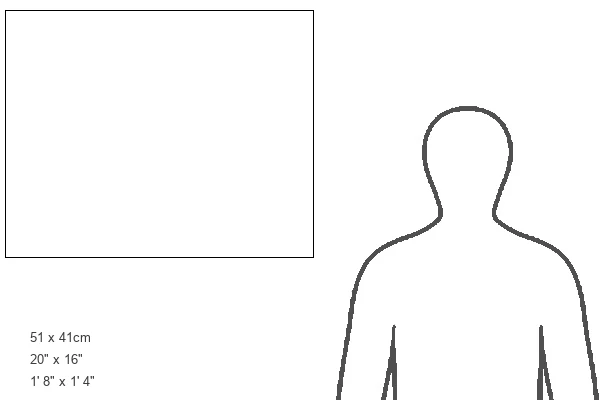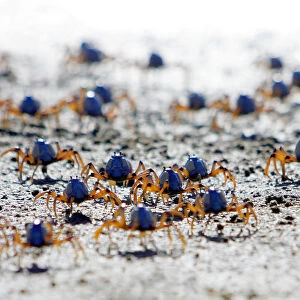Metal Print > Europe > Related Images
Metal Print : Pelican tooth extractor, circa 1751 C017 / 8390
![]()

Metal Prints From Science Photo Library
Pelican tooth extractor, circa 1751 C017 / 8390
Pelican tooth extractor, made of steel with screw adjustment. These were an early type of dental forceps, so named due to their claw which was thought to resemble a pelicans beak. Tooth extraction is the earliest known dental procedure, it was used as a last-resort cure for toothache. Pelican extractors originated in the fourteenth century and by the 1500s they had become the most popular tool for tooth-drawing amongst barber surgeons and practitioners. No two alike, each Pelican extractor would have been individually designed to order. This example is continental and dates from around 1750
Science Photo Library features Science and Medical images including photos and illustrations
Media ID 9212087
© SCIENCE PHOTO LIBRARY
1700s 1750 1750s 18th Century Antique Continent Continental Dental Dentistry Eighteenth Century Extract Extraction Forceps Instrument Instruments Mainland Peach Background Pelican Teeth Tool Tools Tooth Extractor
16"x20" (51x41cm) Metal Print
Introducing the Media Storehouse Metal Prints collection, featuring this intriguing historical artifact - the Pelican Tooth Extractor, circa 1751 C017 / 8390 by SCIENCE PHOTO LIBRARY. This early dental instrument, crafted from steel with a screw adjustment, is a fascinating example of medical innovation. Known for its distinctive claw shape, reminiscent of a pelican's beak, this Pelican Tooth Extractor was a precursor to modern dental forceps. Add an air of antiquity and scientific curiosity to your space with this captivating Metal Print. Available in various finishes to complement your decor.
Made with durable metal and luxurious printing techniques, our metal photo prints go beyond traditional canvases, adding a cool, modern touch to your space. Wall mount on back. Eco-friendly 100% post-consumer recycled ChromaLuxe aluminum surface. The thickness of the print is 0.045". Featuring a Scratch-resistant surface and Rounded corners. Backing hangers are attached to the back of the print and float the print 1/2-inch off the wall when hung, the choice of hanger may vary depending on size and International orders will come with Float Mount hangers only. Finished with a brilliant white high gloss surface for unsurpassed detail and vibrance. Printed using Dye-Sublimation and for best care we recommend a non-ammonia glass cleaner, water, or isopropyl (rubbing) alcohol to prevent harming the print surface. We recommend using a clean, lint-free cloth to wipe off the print. The ultra-hard surface is scratch-resistant, waterproof and weatherproof. Avoid direct sunlight exposure.
Made with durable metal and luxurious printing techniques, metal prints bring images to life and add a modern touch to any space
Estimated Image Size (if not cropped) is 50.8cm x 40.6cm (20" x 16")
Estimated Product Size is 51.4cm x 41.2cm (20.2" x 16.2")
These are individually made so all sizes are approximate
Artwork printed orientated as per the preview above, with landscape (horizontal) orientation to match the source image.
EDITORS COMMENTS
This print showcases a remarkable artifact from the past - a Pelican tooth extractor dating back to around 1751. Crafted with precision using steel and featuring a screw adjustment, this dental forceps was an early tool used for tooth extraction. Its name derived from the resemblance of its claw-like design to that of a pelican's beak. Tooth extraction, considered as one of the earliest known dental procedures, served as a last-resort remedy for excruciating toothaches during those times. The popularity of Pelican extractors soared in the fourteenth century and peaked by the 1500s among barber surgeons and practitioners who performed these extractions. What makes this particular Pelican extractor truly fascinating is its uniqueness. Each instrument was individually designed upon request, resulting in no two extractors being alike. This specific example hails from continental Europe and belongs to the mid-18th century period. With its peach background highlighting every intricate detail, this antique photograph not only offers insight into historical dentistry practices but also serves as a testament to human ingenuity throughout centuries. It reminds us of how far we have come in terms of dental care while honoring our ancestors' resourcefulness when faced with oral health challenges.
MADE IN THE USA
Safe Shipping with 30 Day Money Back Guarantee
FREE PERSONALISATION*
We are proud to offer a range of customisation features including Personalised Captions, Color Filters and Picture Zoom Tools
SECURE PAYMENTS
We happily accept a wide range of payment options so you can pay for the things you need in the way that is most convenient for you
* Options may vary by product and licensing agreement. Zoomed Pictures can be adjusted in the Basket.














